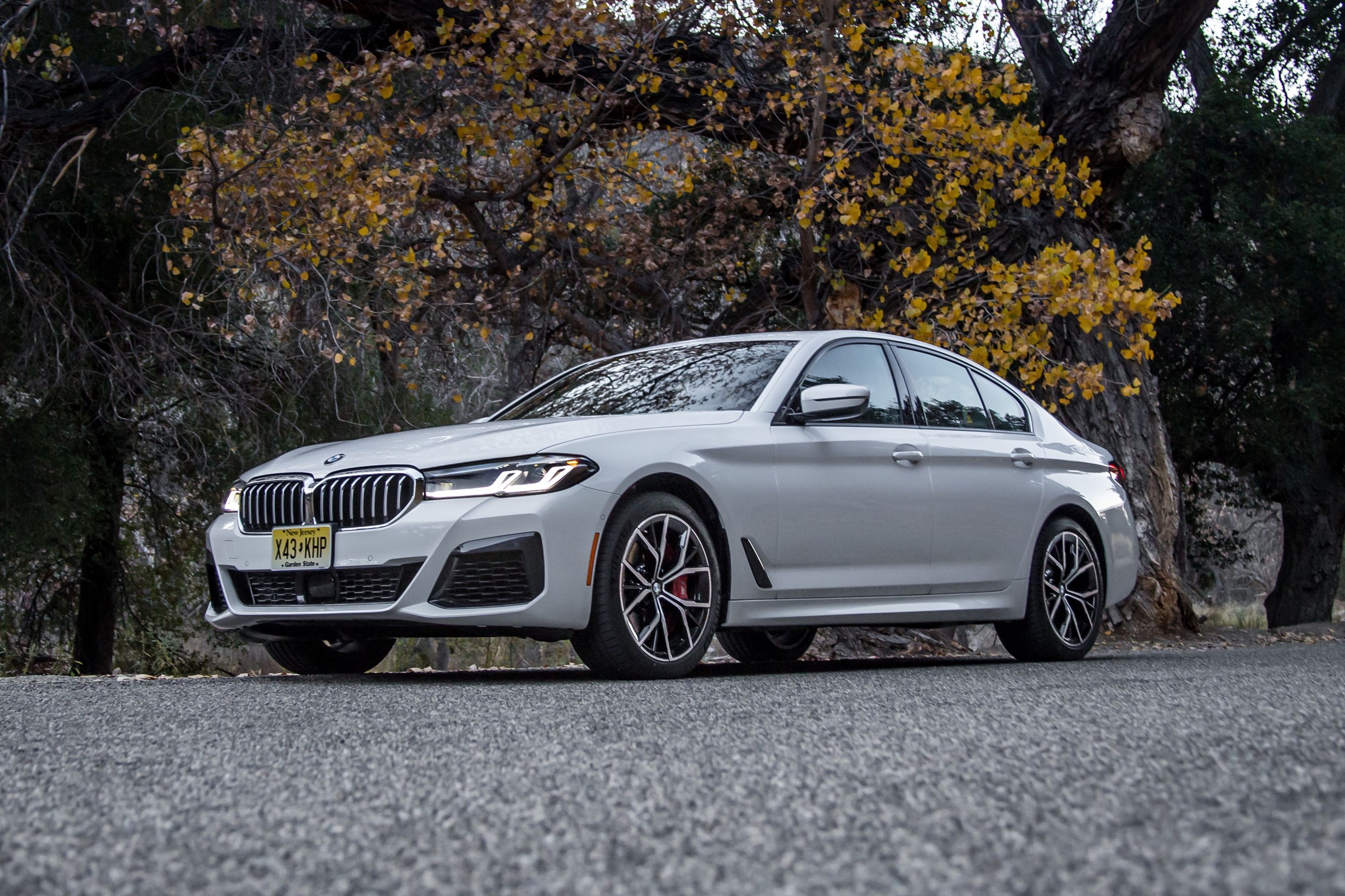
Arch-rivals BMW and Mercedes-Benz continue to battle it out for best-in-class honors in a bewildering number of segments. Often, the choice between which one is best often comes down to which is newer; for instance, as accomplished as the current Mercedes-Benz C-Class is, it was launched back in 2015, so it's a much older platform than the fresher BMW 3 Series and as a result, the odds are stacked against it - until the new C-Class arrives, of course, and the pendulum inevitably swings in the other direction.
But for once, the two juggernauts' calendars are almost perfectly in sync. Within about two months of each other, the mid-life facelifts of both the 5 Series and E-Class were revealed, with the former revealed earlier this week. This provides the ideal opportunity to compare them and try to figure out which midsize sedan has the edge, at least until we have the chance to get behind the wheel of both.
Exterior
Both cars received a visual nip and tuck, borrowing the latest styling cues from newer models within their respective ranges. Each model has noticeably revised head- and taillights. The E-Class is more curvaceous and the 5 Series more angular. The E is now more distinguishable from the smaller C-Class, with taillights resembling those on the forthcoming S-Class flagship. The 5, meanwhile, gets eye-catching L-shaped LED DRLs and a larger grille, although fortunately not as large as the 7 Series' snout.
Interior
In the luxurious cabins, the changes are a bit harder to spot but are more useful. The BMW gains the standard 12.3-inch Live Cockpit Professional cluster, which is modern but still not as configurable as Mercedes' dual 12.3-inch offering; the E also introduces the latest generation of MBUX. Both cars have 12.3-inch central screens, too, although the E-Class's dual screens sit closer together while BMW prefers to separate the two.
The 5 also gains iDrive 7 with the long-overdue fitment of Android Auto. The 2021 Mercedes-Benz E-Class retains the more striking cabin and has a new steering wheel with Touch Control buttons, along with capacitive detection to monitor driver attentiveness. Based on previous exposure to 2020 models, we've found the E-Class's instrument cluster to be clearer but the 5 Series' infotainment to be a bit easier to use. Quality-wise, both interiors were top-class before, and that fact remains.
Powertrains
Under the hoods, more changes await. The 5 Series retains the base turbo-four in the 530i, but the six-pot 540i gains a 48-volt starter-generator which should improve both economy and the smooth operation of the stop-start system. Mercedes has also revised its six-cylinder offering, with the E450 getting a 3.0-liter turbo straight-six with mild-hybrid tech, the first time this powertrain has made it to a non-AMG model in the E-Class lineup. Its 362-horsepower output trumps that of the 540i, but BMW also has the mighty 523-hp M550i V8 which will continue doing battle with the AMG E53. Both can be equipped with rear-wheel drive as well as all-wheel drive, placing the two rivals on an even keel.
Pricing And Verdict
Mercedes has yet to release pricing for the 2021 E-Class, but the 2021 BMW 5 Series will start at $54,200 for the 530i, which is a $300 increase on the 2020 version and just $150 more than the base 2020 E-Class. The 540i costs $59,450, the 530e is $59,500, and the M550i xDrive tops the range at $76,800. xDrive can be added to the 530i, 540i, and 530e for an additional cost
Which one is best? It's been a near-impossible question to answer through the years, and it still is. What's notable is how many of the upgrades to the two cars mirror one another, from the mild-hybrid tech to the digital interfaces. The 5 Series should maintain its dynamic edge, while the E-Class is the consummate cruiser.
Diehard Mercedes fans are unlikely to have their allegiances swayed by the upgraded 5 Series, and vice versa. The other guarantee is that every other competitor in this segment will have its hands full trying to compete with these two.
